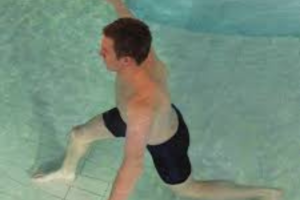1. Introduction to Arthritis
Aquatic exercise can prevent arthritis. Arthritis is a prevalent condition characterized by inflammation of the joints, affecting millions worldwide. It leads to stiffness, pain, and reduced mobility, significantly impacting the quality of life for those afflicted.
2. Understanding Aquatic Exercises
Aquatic exercises involve physical activities performed in water, offering unique therapeutic benefits for individuals with arthritis. The buoyancy of water reduces the impact on joints, making movements gentler and less painful.
3. Types of Arthritis
Arthritis encompasses various conditions, including osteoarthritis and rheumatoid arthritis. Osteoarthritis results from wear and tear on the joints over time, while rheumatoid arthritis is an autoimmune disorder causing joint inflammation.
4. The Impact of Arthritis on Daily Life
Arthritis can hinder daily activities such as walking, climbing stairs, and even grasping objects. It affects not only physical health but also mental well-being, leading to frustration and decreased confidence.
5. Benefits of Aquatic Exercises for Arthritis
- Reduced impact on joints: Water buoyancy alleviates stress on arthritic joints, allowing for pain-free movement.
- Improved flexibility and range of motion: Aquatic exercises promote joint flexibility and help maintain or increase range of motion.
- Strengthening of muscles: Resistance provided by water enhances muscle strength without exerting excessive strain on joints.
6. Key Aquatic Exercises for Arthritis
Water Walking
Walking in water provides a low-impact cardiovascular workout, strengthening leg muscles and improving joint flexibility.
Leg Lifts
Standing in water, lift one leg to the side, engaging hip muscles and enhancing stability.
Arm Circles
Extend arms to the sides and make circular motions with hands to strengthen shoulder muscles and improve joint flexibility.
Water Aerobics
Participate in group water aerobics classes designed for individuals with arthritis, incorporating gentle movements and stretches.

Water Cycling
Utilize stationary water bikes or pedal while floating to strengthen leg muscles and improve circulation.
7. Tips for Safe Aquatic Exercise
- Consultation with a healthcare professional: Seek guidance from a healthcare provider before starting any exercise regimen.
- Gradual increase in intensity: Begin with short sessions and gradually increase duration and intensity.
- Listening to your body: Pay attention to how your body responds and adjust accordingly.
- Hydration: Drink plenty of fluids before, during, and after aquatic exercise to prevent dehydration.
8. Conclusion
Aquatic exercises offer a refreshing and effective approach to managing arthritis symptoms and improving joint health. By incorporating these exercises into a regular routine, individuals can experience relief from pain and stiffness while enhancing overall well-being.
9. FAQs on Aquatic Exercises for Arthritis
1. Can anyone with arthritis benefit from aquatic exercises? Yes, individuals with arthritis, regardless of age or severity, can benefit from the gentle and therapeutic nature of aquatic exercises.
2. How often should I engage in aquatic exercises? It’s recommended to aim for at least two to three sessions per week to experience optimal benefits from aquatic exercise.
3. Do I need special equipment for aquatic exercises? While specialized equipment such as water dumbbells or floats can enhance the workout, many aquatic exercises can be performed with minimal equipment or even in shallow water.
4. Are aquatic exercises suitable for all types of arthritis? Yes, aquatic exercises are generally safe and beneficial for various forms of arthritis, including osteoarthritis and rheumatoid arthritis.
5. Can aquatic exercises replace other forms of arthritis treatment? While aquatic exercises can significantly improve joint health and alleviate symptoms, they are most effective when used in conjunction with other treatments prescribed by healthcare professionals.


